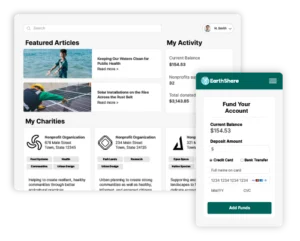Yes.
End of article…
Okay, not really. But carbon neutrality is an important goal to reach as soon as possible; not just a term being thrown around for fun by industry experts. Unfortunately, the truth about why we need carbon neutrality and how we get there is often buried under arguments over greenwashing and fossil fuel propaganda; two things that are not only confusing but also incredibly distracting. Intentionally so.
Let’s break it down. Starting with what carbon neutrality really is, why it matters, and how we can achieve it before we reach the point of no return (a.k.a., an increased global surface temperature of 2°C).
Because, yes, carbon neutrality really does matter.
What Is Carbon Neutrality?
There is a strong chance that you’ve heard the term “carbon neutral” at least once in your life. It has become one of the biggest talking points in the climate and conservation space, and one that more and more governments and businesses are trying to tackle. Or, at least they say they are.
Carbon neutrality, or being carbon neutral (“net zero”), means striking a balance between how much carbon dioxide (and other greenhouse gases) humans and corporations emit into the atmosphere and how much is being absorbed by trees, plants, soil, and our global waters. We need a net balance of zero if we want to protect ourselves and our communities from the most harmful effects of climate change. An even better end result would be to reduce our emissions enough that the earth is able to absorb more carbon than what we release; a state known as being ‘carbon positive.’
Peter Boyd, a Resident Fellow at Yale’s School of the Environment put it perfectly when he said that carbon neutrality isn’t about, “achieving absolute zero… [it’s about] reducing our human-caused emissions to the level where the natural world has an ability to absorb it so we can observe a planet in equilibrium.”
Why Carbon Neutrality Matters
Achieving carbon neutrality is all about avoiding the aforementioned “harmful effects of climate change,” and communities all over the globe are already suffering. From drought to wildfires to food insecurity to toxic air, both urban and rural alike, the harm is already being done. And this harm—and the steep social and economic costs associated with it—is spreading.
We have an opportunity and a responsibility to stop it before it gets worse.
By 2050, the human population is expected to rise to nearly 10 billion people (2+ billion more than we have today). This will require 80% more energy and a 70% increase in food production if we’re going to meet the needs of this larger population. However, attempting to do this using current systems means an exponential rise in the use of fossil fuels and, as a result, carbon emissions. The consequences would be catastrophic, increasing global surface temperatures 2°C above average, making much of the world uninhabitable due to extreme heat.
We need to get to net zero, and we need to do it now.
How We Can Achieve Carbon Neutrality
We can’t achieve net zero without addressing the number one cause of carbon emissions: energy.
In 2024, global carbon dioxide (CO2) emissions grew by 0.9%. This may not seem like a lot, but continuing at this pace will push us beyond a 1.5°C average temperature increase within the next couple of years (if we haven’t achieved it already, which 2024 reports indicate we have). This makes staying below 2°C by 2050 (23 years away) even less likely…
But there’s reason to hope and to continue to push for alternative solutions! Non-fossil fuel energy development across the globe grew by 6.2% in 2024 and continues to outpace its high-polluting competitor. And for good reason: renewable energy resources have the potential to supply more than 3,000 times our current global energy needs; far more than fossil fuels. To be able to tap into this, we need an updated power grid that is able to supply, store, and share this energy across entire communities, states, regions, and countries.
We also need to work on improving our global carbon sinks. A carbon sink is a natural or human-made system that absorbs and stores CO2 from the atmosphere. Forests, oceans, and global soils are all examples of major carbon sinks. Scientists estimate that global carbon sinks store roughly 9.5 to 11 gigatons of carbon every year. Scientists are currently working on developing carbon capture technology, but studies find the current state of the tech to be costly and relatively ineffective. To make a bigger impact faster, we need to focus on improving the natural sinks that already exist. For example, planting more trees and adopting regenerative farming practices to improve the health of our land, improving its ability to absorb CO2.
The Current State of Carbon Neutrality
We’ve talked about why carbon neutrality is important and how it can be achieved, but where do we stand right now?
Currently, 151 countries around the world have pledged to become carbon neutral, but only 72 of them have taken complete policy frameworks to get there. At this pace, we are set to miss the goal of tripling global renewable energy by 2030. Climate models also indicate that, at the current pace, we will fall short of our global goal of limiting global warming to 2 degrees.
According to the United Nations Economic Commission for Europe, there are four key tasks every country needs to focus on:
- Diversifying energy supplies and prioritizing low- and zero-carbon technologies.
- Phasing out fossil fuels much faster.
- Scaling up electrification and investing in and implementing new forms of energy storage.
- Building capacity and support for the development and implementation of natural and artificial carbon capture, use, and storage.
Now more than ever, we need international collaboration with every country pulling their weight and contributing toward this goal that will positively impact every human on earth. It seems like an obvious win across the board, so what’s getting in the way?
Politics, Greed, and the War Against Net Zero
Whoop, there it is. The elephant in the room has a name, and it’s called moneyed interests.
The fossil fuel industry, made up of oil, gas, coal, and the utilities that use them, has a total revenue of more than $240 billion in the United States alone. Institutional investors (companies or organizations that invest money on behalf of others, such as hedge funds, commercial banks, and pension funds) currently hold roughly $4.3 trillion in bonds and shares relating to fossil fuel companies. That’s a lot of people and a lot of money invested in the success of these markets. And they’re not being quiet about it. In 2024 alone, more than $168 million was spent in lobbying by the fossil fuel industry, contributing to political campaigns on both sides of the aisle and across the political spectrum.
Did you know that the concept of an individual’s carbon footprint was actually the brainchild of a PR agency and the oil company BP? It was invented with the express intention of shifting the blame and responsibility for pollution and carbon emissions off oil and gas companies and onto the everyday consumer. And it worked. Despite there being a significant difference in consumption and impact between individuals and major fossil fuel corporations, the concept of the carbon footprint has become well integrated into the mainstream discourse around fossil fuels and greenhouse gas emissions.
For decades, fossil fuel companies and lobbyists have been orchestrating and, yes, buying propaganda and political support to ensure their continued success and ever-growing bottom lines—all at the expense of public health and community wellness across the globe. These efforts actively undermine all progress toward achieving net zero goals.
Supporting Fossil Fuel Workers
As we discuss the importance of a fast transition to a fossil-free future, it’s equally important to acknowledge those people who will be most significantly impacted by this change: fossil fuel workers. Currently, the fossil fuel industry employs roughly 32 million people worldwide. That’s a lot of jobs at risk of disappearing.
In order to make the transition away from fossil fuels fair and equitable, there must be plans to train and integrate these employees into new clean energy roles. Luckily, predicted economic and job growth is extremely positive! The International Energy Agency (IEA) estimates that, though 5 million jobs in fossil fuel production could be lost in the coming decade, growth in the clean energy sector will add 14 million new jobs. Energy-related sectors could also add as many as 16 million jobs to the market in areas such as manufacturing. That’s a net-new increase of 25 million jobs by 2030.
From an economic, job market, and long-term energy production perspective, clean energy is a win-win-win.
What You Can Do to Help Reach Net Zero
Despite the idea of our individual carbon footprints being a clever propaganda spin, there are still things we can do as individuals to contribute toward the carbon neutral future we so desperately need. (Being an armchair critic without taking any action doesn’t count.)
So, what are your options?
- Apply public pressure. You’ve heard us say it before and, yes, we’re going to say it again: it’s time to reach out to your representatives. Check to see if any of your state, federal, or judicial reps have received campaign money from fossil fuel companies or lobbies. Demand change and prioritizing clean energy at every level, including within your local community. For sample language, check out the Get Involved section on our Renewable Energies page (30×30 Project).
- Purchase your energy from a renewable source. More and more energy providers across the U.S. are offering a renewable energy option to their customers. Visit your provider’s website to see if they have renewable energy buy-in programs. Often, these programs help support renewable energy projects happening in your state!
- Be conscious of where you spend (and save) your money. Prioritize supporting companies with transparent and sustainable supply chains, companies that purchase clean energy, and banking institutions that prioritize investments in renewable energy over fossil fuels.
- Champion policies that promote carbon neutrality. Whether it’s in your local community or a state-wide initiative, make sure your elected officials know that you want clean energy and carbon neutrality to be the priority. Get involved in bringing new policies to your representatives’ attention (see bullet #1) or get involved in community education and advocacy. Volunteer with nonprofits who are also seeking to implement sustainability practices in your community or state.
- Support scientists and other experts. Scientists and the data and expertise they provide need to be supported and funded. This data and the professional interpretations of it by experts are essential for guiding our next steps as a country and global society. Voice your support for our scientists, the work they do to contribute toward a carbon neutral future, and the funding they need to do it!
Other Ways to Get Involved
- If you’re so inspired, consider joining the green workforce. The world needs more sustainably minded scientists, engineers, programmers, mechanics, and builders.
- Promote land and water conservation where you live. Take part in community cleanups, advocate for healthy local habitats and ecosystems, protest unsustainable development, and implement sustainable lawn care practices—including planting native species (which absorb more carbon dioxide than their non-native counterparts).
- Purchase organic, regeneratively grown food when and if you can. Plus, try eating less meat on a weekly basis. Just one meat-free day a week per family can help dramatically reduce demand for the meat industry; the highest producer of methane gas.
- Switch your main form of transportation to a hybrid vehicle, electric vehicle, or e-bike. Great deals are out there, alongside government rebates (at least, for now). You can often find hybrid cars for just as cheap as standard fossil fuel vehicles; keep your eyes peeled! Are there public transportation options where you live? Even better!






